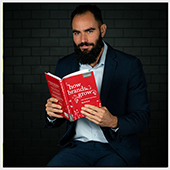
Here is how 5 Marketing Leaders are Balancing Agility with Foresight in the New Normal
Every two weeks we bring together five amazing marketing and insight leaders from the Brand Builders Community to discuss the most urgent questions from our industry.
This past week we met with innovative marketing leaders from categories including snacking, personal care, beauty, essential paper products, and beverages. Additionally, we had our very own Director of Behavioural Science, Nicole LeBarr (PhD), join to add her perspective on the consumer psychology angle.
Ahead of this 30-minute think tank, each of the participants were asked to consider the following 2 questions:
1. Looking Back: What was the biggest challenge to you as an insights leader in the last 15 months and how have you shifted your approach and thinking? How have you anchored the need for short-term guidance while also proactively looking into the future to anticipate what’s coming?
2.Looking Forward: What do you see as the biggest opportunities and risks for insight leaders as the world opens up and how might you modify your approach to adding value to your marketing stakeholders? What are the big questions insights leaders will need to answer in 2022 and 2023?
Here are the top 5 soundbites from this 30-minute conversation, but if you would like more content on these topics, please let us know.
Top 5 Soundbites about the Future and Foresight in Marketing & Insights
1) The Future is Friendly for the Insights and Market Research Function:
There is enthusiasm and optimism about the future as GDP is growing, we’re heading into the Roaring 20s, and there will likely be more money to invest and certainly enough complexity and change to proactively prepare for. At the same time, as humans (and consumers), everything still feels really uncertain right now, but things are feeling more hopeful. The road ahead will be choppy, but we are heading in the right direction.
2) The Pandemic Got the Insights Function a Better Seat at the Table:
While it is sad that it took a pandemic, the last 15 months has put the insights function in the spotlight. It has helped demonstrate the value our function brings in proactively preparing for the future and has secured us a seat at the table with our key stakeholders. They have relied on our guidance, as well as our questions to drive growth and have impact. We need to continue to preserve that equity in the fight for share of attention within the organization as we move into the next 12 months.
3) The Implications of the Shortening Half-Life of Research
The abundance of data continues to proliferate and making sense of it has never been more challenging given the complexity, uncertainty, and rapid pace of change we are operating in. Our organizations are drowning in data and furthermore, the half-life of our research studies has been shortened as a result of how quickly the world is changing. Does this mean we need to conduct research more often that will further increase the amount of data we are all drowning in? We must help our stakeholders feel that we are the constant within this change and find ways to plan for a shorter future in a more iterative way, while still thinking about longer term strategic issues. The insights function must be the lifeboat to save our stakeholders as they drown in data and change.
4) Returning to Universal Truths to Manage Complexity and Uncertainty
Given that our businesses are facing the highest levels of complexity, uncertainty, and change we have seen in a long time, it is difficult for consumers themselves to know where they will be at in the next month, let alone 12-24 months. This is what makes foresight so challenging. Yet, there are still universal truths and consumer tensions that we can ground ourselves in. We are creatures of habit and we have formed new habits in COVID that won’t shift immediately and could become permanent. Also, after over a year cooped up, consumers are craving experiences and as insight leaders we need to ensure our teams are prepared for this by returning "back to the basics" to explore universal truths and consumer tensions.
5) Evolving your Toolkit to Balance Agility and Strategic Foresight
The lens on the future has shortened, as our environment can change quickly and often. This has significant ramifications on how we plan. Foresight has been redefined and may need to be more specific and considered within a shorter time lens. Short-term guidance will need to happen in many smaller stages and is likely regionally-specific, given different stages of severity and opening up. It also needs to be operationalized to move beyond being descriptive, so that it can be more prescriptive and predictive. This has implications on the tools we use as they need to be able to mix agility with long-term strategic thinking. This will likely drive the creation of a new wave of tools that balance both the short term need for agility with long-term strategic foresight for insight leaders and their marketing stakeholders.
Do you want to proactively prepare your organization for the future?
If this sounds like the same issue your organization is facing, please reach out.
We could share an inspiring story of how a leading apparel brand balanced the need for rapid agile inputs with a robust long-term strategic foundation. We could also share additional resources on the balancing of agility and foresight.
The Brand Builders Think Tanks will happen every two weeks, so please let us know if you or someone from your team would benefit from meeting top marketing and insight leaders from non-competitive categories in a 30-minute think tank this summer.
If you would like to receive the next set of soundbites focused on the Future of Insights, Shopping, and Innovation, send us a message.




